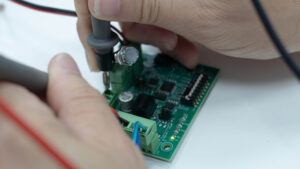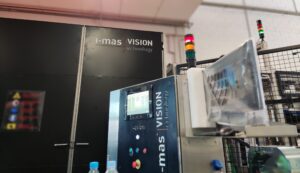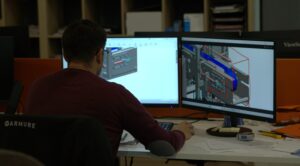Automated inspection using artificial intelligence is transforming quality in industrial processes. From defects in metal surfaces to dimensional errors in plastic parts, training AI to detect faults requires much more than a neural network: it involves building a robust system based on quality data, well-selected models, and a rigorous validation process.
In this article, we analyze the key steps for developing an effective AI-based defect detection solution, with direct applications in industrial automation, machine vision, and robotics.
Data collection and preparation
Any AI model is only as good as the data it is trained on. In the case of defect detection using computer vision, large volumes of correctly labeled visual data are required: images of parts in normal conditions and with various defects (cracks, burrs, stains, deformations, etc.).
It is essential to balance the database to avoid bias: often there are few samples of defects compared to thousands of correct parts. To correct this, techniques such as the following can be applied:
- Data augmentation
- Synthetic generation of images with simulated defects
- Accurate annotation with collaborative labeling tools
Image quality (resolution, lighting, focus) also directly affects model performance. Standardizing the capture process is key to avoiding noise in training.
Choosing the right AI model
The type of model will depend on the specific problem:
- For classifying parts as “correct” or “defective”: simple CNNs (convolutional neural networks).
- For locating specific defects: detection models such as YOLO, Faster R-CNN, or SSD.
- For pixel-by-pixel segmentation (precise detection of the defective area): U-Net, DeepLab, Mask R-CNN.
It is important to consider latency, computational cost, and ease of integration with existing industrial automation systems (PLC, SCADA, etc.). Sometimes, less complex but fast and explainable models may be preferable to more accurate but opaque or slow solutions.
Integration into industrial automation environments
Once the model has been validated, it must be integrated into the production environment. This can be done using: edge computing (local processing on the production line), local or cloud servers for batch processing, or integration with quality software, MES, or industrial control systems.
At this point, robotics and computer vision work hand in hand with AI, enabling autonomous inspection of parts, automatic rejection of defective units, and dynamic adjustment of parameters in real time.
It is essential to establish mechanisms for periodic retraining with new data, traceability of system decisions (explainability), and alarms for classification errors.
A good AI system for defect detection not only identifies faults, but also learns over time, improves process efficiency, and helps make better quality decisions.
In the engineering department of i-mas we are specialized in the combination of artificial vision technologies, deep learning and industrial automation in production processes, which allows us to offer integral solutions adapted to the specific needs of each client.
Want to learn more about our services? Contact us or visit our projects section!



